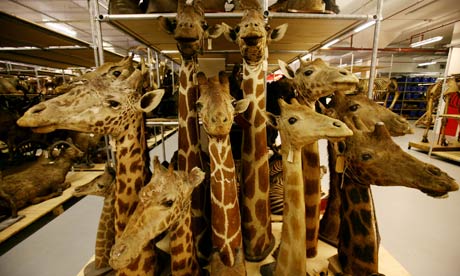Recycling - Recycling is the process of re-using a given product (beyond its intended use), or producing a new product from a recyclable material.
Why Should We Recycle?
Conservation
All man-made products incorporate raw materials to create the finished product. This involves harvesting the earth's natural resources (e.g. wood, metal) in order to acquire the raw materials.
Deforestation is a prime example of how harvesting natural resources is harming the environment. This could be reduced if we recycle more paper and old wooden products.
Energy Saving
Recycling reduces the amount of energy needed to create a new, similar product. If we didn't recycle paper, more trees would have to be chopped down, transported, and manufactured into the finished product.
This reason why you should recycle is a very important one, as energy conservation is one of the key ingredients for the fight against climate change.
Reduce Pollution
 Tied in with energy saving, is the reduction of pollution as a result of manufacturing processes becoming more efficient.
Tied in with energy saving, is the reduction of pollution as a result of manufacturing processes becoming more efficient.
Any reduction in CO2 or other harmful gases is not only a key ingredient for the fight against climate change, but a key ingredient for cleaning the air we breathe.
If we can reduce pollution levels from the manufacturing industry by a significant level, this could have a positive impact on our health.
Landfill Reduction
The more we recycle, the more we can help to reduce the burden on local and national landfill sites. As population levels increase, we will need to find more landfill sites, which will harm the surrounding environment and wildlife.
This is another important reason why we should recycle more, in order to reduce the impact landfills have on the surrounding environment.
Understanding the Rules (set by government) for Recycling
The biggest challenge for communities addressing waste prevention and recycling at government facilities is their lack of power to regulate the actions of State and federal agencies. Understanding the rules that apply at each level and educating facility managers about their responsibilities is important when addressing recycling issues.Local Agencies
Recycling policies vary among local governments. In most cases, the city council or board of supervisors has passed a recycling policy that mandates certain types of in-house recycling programs. Sacramento County recently implemented a recycling ordinance that requires all private haulers to achieve at least 30 percent diversion. The ordinance also covers county facilities, including the county’s two transfer stations.One key challenge for local governments is implementing recycling programs for community service districts (CSD). CSDs and other special districts are often formed in unincorporated areas and have their own governing body. As a result, CSDs are not under the direct control of a city or county agency. Chapter 764, Statutes of 1999 (AB 75, Strom-Martin) requires CSDs to report to jurisdictions on their programs and tonnages. While the provision doesn’t require CSDs to comply with the IWMA requirements, it does provide information on the activities of CSDs to cities and counties. The local jurisdictions can include this information in their annual reports.
State Agencies
AB 75, implemented in 1999, mandates that State agencies comply with IWMA diversion requirements. Public Resources Code (PRC) sections 42920–42928 contain the following requirements:
- Requires each State agency to develop an integrated waste management plan. State agencies may prepare their own plan or use the model plan developed by the CalRecycle.
- Requires each State agency and each large State facility (individual California State University campuses, community colleges, prisons) to divert 25 percent of its waste by 2002 and 50 percent by 2004.
- Requires each State agency to appoint a recycling coordinator.
- Requires State agencies to provide adequate areas for recycling in State-owned and leased buildings.
- Requires State agencies to report annually on program implementation and diversion rates.
“Agency” includes every State office, department, board, commission, or other agency of the State. In addition to the requirements of AB 75, the following policies and statutes address State agency recycling:- Executive Order W-7-91 requires California State agencies to buy recycled products and set up recycling programs for recyclable materials, where feasible, and requires the CalRecycle to assist in these efforts.
- Public Contract Code (PCC) sections 12164.5–12167.1 require the CalRecycle to implement and maintain a recycling plan for the Legislature and all State-owned and leased buildings and provide for the recycling of office paper, corrugated cardboard, newsprint, beverage containers, waste oil, and any other recyclable material generated in sufficient quantity.
- PCC section 12165 (d) prohibits establishment of a recycling program by any State office, agency, or its employees without CalRecycle approval.
- PCC section 12167.1 requires State agencies and institutions to report quantities of materials collected for recycling to the CalRecycle.
- PRC sections 42560–42562 require the CalRecycle to initiate a high-grade white office paper recovery assistance program for California State offices by providing training materials and recycling containers, identifying markets for collected materials, and negotiating contracts with local secondary material brokers.
The CalRecycle is responsible for overseeing AB 75 implementation and assisting State agencies in the development of their programs (see State Agency Recycling Program).
Federal Agencies
On October 20, 1993, President Bill Clinton signed Executive Order 12873, “Federal Acquisition, Recycling and Waste Prevention.” On September 14, 1998, President Clinton signed Executive Order 13101, which strengthened the implementation and enforcement of recycling requirements. Although the executive orders primarily addressed the purchase of recycled products, the orders also established policies for the development of recycling programs. Order 13101 includes the following provisions:
- Requires each agency to include recycling provisions in the acquisition of all leased space and in the construction of new federal buildings.
- Requires each agency to initiate a recycling program that is compatible with State and local recycling requirements.
- Allows executive agencies to retain a share of proceeds from the sale of recycled materials.
- Requires each agency to establish goals for both waste prevention and recycling and to report on progress in its annual report.
“Agency” includes all executive agencies as defined in U.S. Code Title 5, Part 1, Chapter 1, section 105, including the Department of Defense. The Office of the Federal Environmental Executive (OFEE) is responsible for overseeing the implementation of recycling and procurement programs at federal agencies.Recycling Etiquette
Recycling can sometimes be confusing and it can be difficult to know whether you are following all the right rules. Improve your recycling efforts by learning some recycling etiquette rules and check out which type of collection is best and why different areas recycle and collect in different ways.
The case for “co-mingled” collections
A 2005 study by the Waste & Resources Action Programme (WRAP) showed that the quantity of paper collected for recycling rose when collections moved from single-material to multi-material. Clearly, separating recyclables takes time, whereas co-mingled (mixed waste) collections are easier for the householder, and boost overall recycling levels.
To collect the material accepted in co-mingled schemes individually, kerbside collection lorries would need to be highly compartmentalised. Co-mingled kerbside collections reduce the number of trips householders make to recycling centres. Both factors make co-mingled collections more energy-efficient.
The case for separation
Costs increase as more collection and separation is required for the recovery process. Furthermore, co-mingled waste leads to an increased risk of contamination. Different types of material are in contact with each other, and a single kerbside box may result in householders being less attentive when sorting recyclate. The recycling box becomes more of a second dustbin, with hygiene and cross-contamination both issues to be considered.
The solution?
A good compromise is the dual bag method adopted by several local authorities. Powys County Council, for example, provide households with two bags – a red one for plastics and metal, a black one for paper, card and textiles. Partial separation makes the process more efficient for the council, without placing a burden on householders.
Why is recycling provision so variable across the UK?
The government does not specify how recycling targets should be met, so it’s up to the local authority to implement schemes suited to their area. Services and facilities thus vary greatly, from separated waste collection to the single kerbside “green box” system. Variation seems endless, and it’s due to the following:- Cost – Investment in new recycling facilities is expensive, so cash-strapped councils stick to established recycling processes, (paper, glass).
- Targets – Statutory recycling targets are weight-based, shifting focus onto heavier waste streams (glass, metal) at the expense of lighter plastics.
- Logistics – Collection can be problematic in rural (long distances between homes, scarcity of recycling facilities) and urban areas (limited space, tower blocks).
- No nationwide framework – Industry bodies, charities and campaign groups encourage best practice but there is still a lack of government guidance.
Which type of collection is best?
Recycling collection schemes aim to, firstly, divert more waste from landfill and, secondly, facilitate efficient, profitable recycling. However, the debate rages on the proper method for meeting these targets:The case for “co-mingled” collections
A 2005 study by the Waste & Resources Action Programme (WRAP) showed that the quantity of paper collected for recycling rose when collections moved from single-material to multi-material. Clearly, separating recyclables takes time, whereas co-mingled (mixed waste) collections are easier for the householder, and boost overall recycling levels.
To collect the material accepted in co-mingled schemes individually, kerbside collection lorries would need to be highly compartmentalised. Co-mingled kerbside collections reduce the number of trips householders make to recycling centres. Both factors make co-mingled collections more energy-efficient.
The case for separation
Costs increase as more collection and separation is required for the recovery process. Furthermore, co-mingled waste leads to an increased risk of contamination. Different types of material are in contact with each other, and a single kerbside box may result in householders being less attentive when sorting recyclate. The recycling box becomes more of a second dustbin, with hygiene and cross-contamination both issues to be considered.
The solution?
A good compromise is the dual bag method adopted by several local authorities. Powys County Council, for example, provide households with two bags – a red one for plastics and metal, a black one for paper, card and textiles. Partial separation makes the process more efficient for the council, without placing a burden on householders.
What’s in your Rubbish Bin?
A large percentage of households still do not recycle enough and throw everything that they consider ‘rubbish’ into their ordinary bin.
Much of this waste can be recycled and should be disposed of separately to general household waste. Look inside this rubbish bin to see how much of the contents should actually have been recycled. Check our list on the right to see how to recycle different materials.
Much of this waste can be recycled and should be disposed of separately to general household waste. Look inside this rubbish bin to see how much of the contents should actually have been recycled. Check our list on the right to see how to recycle different materials.
- Recycling is not just separating your green glass from your brown or collecting newspapers. Send your ink jet and laser printer cartridges back for recycling – many cartridge companies will even provide you with postage free return shipping.
- To identify recyclable products, the universal recycling logo/symbol was introduced. The logo can be used for a variety of different reasons, for example, a recycling symbol with a percentage inside identifies a product made from recyclable material, and doesn't necessarily mean it can be recycled.
Some materials are much harder to recycle than others. Plastic based products can be very hard to recycle, when compared with paper based products.
For materials which are hard to break down, if we need these products for a vital purpose, then we should purchase durable goods which will last for a very long time, reducing the need to replace the item in the near future.Check out this great list of items you never thought to recycle.
Car parts
- Car Batteries: "An automotive battery, also referred to as a lead-acid battery, contains about 21 pounds of lead, three pounds of plastic and one gallon of sulfuric acid. These items can be toxic if handled improperly.
- Vehicle Tires: "North America still faces a backlog of hundreds of millions of old tires, quickly piling up outside filling stations and in backyards near you. The EPA estimates that 290 million scrap tires are generated annually, representing two percent of all solid waste, and that some 265 million are sitting in stockpiles right now."

Electronics:
- Cell Phones: There are tons of services nowadays that will grab you old cell phones. Get them out of your junk drawer and let Recellular, Cell Phones for Soldiers, or RBRC take them off your hands.
- Printers and Print Cartridges: Many of the major manufacturers offer recycling programs in which users can return empty cartridges. The used cartridges are separated and then either recycled or disposed of.
- Cables: Ha! Nothing! This kills me. Who wants to start a business?
- iPod: Apple’s commitment to responsible environmental citizenship includes ensuring that an iPod is properly disposed of at the end of its useful life. The recycling program covers your iPod or any cell phone — regardless of the manufacturer or model.
Household items: This list will most likely be long...
- Batteries: Call2Recycle - "Dry-cell batteries include alkaline and carbon zinc (9-volt, D, C, AA, AAA), mercuric-oxide (button, some cylindrical and rectangular), silver-oxide and zinc-air (button), and lithium (9-volt, C, AA, coin, button, rechargeable). On average, each person in the United States discards eight dry-cell batteries per year."

- Drywall - Are you tearing out walls or finishing your basement? Well, that scrap drywall can be recycled!
 Appliances - Do you have an old oven, refrigerator, stove or freezer and appliance repair is out of the question? Check out ARCA -the Appliance Recycling Center. If they won't take it, they can tell you who can!
Appliances - Do you have an old oven, refrigerator, stove or freezer and appliance repair is out of the question? Check out ARCA -the Appliance Recycling Center. If they won't take it, they can tell you who can!- Clothing Hangers - This is a highly recyclable item but I could not find a solid site that I'm comfortable sending you to. Check with your local city manager or government.
- Foam Packaging
- Paint
Other Ways of Recycling:
- Old Jeans (check the website out!)
-
CFL Bulbs
http://www.wisebread.com/twenty-five-things-to-do-with-old-jeans
http://www.ehow.com/how_9169_recycle-eyeglasses.html
http://www.carpetrecovery.org/faqs.php
http://www.arcainc.com/
http://www.call2recycle.org/call2recycle/
http://www.world.org/reuse/plastic.utensils
http://www.soles4souls.org/












